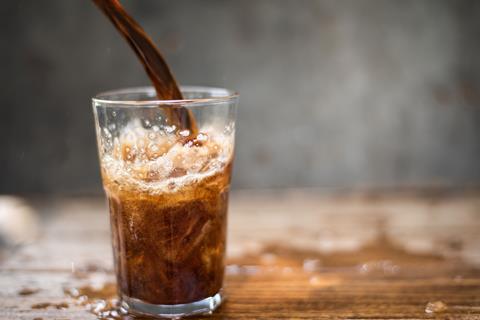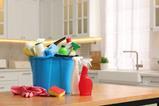The chemistry of fizzy drinks and the perfect pour

As summer rolls around, there’s nothing better than sitting out in the garden and sipping a nice, cool drink of cola or lemonade. But have you noticed that some drinks are fizzier than others? Or ever wondered why drinks don’t appear fizzy in a bottle, and only start to foam once you open them? The answers, of course, are to do with chemistry.
Creating bubbles
The bubbles in soft drinks are carbon dioxide, the same as the bubbles in alcoholic drinks like beer and champagne. Fermentation causes the carbon dioxide in alcoholic drinks, whereas drinks manufacturers deliberately put the bubbles in soft drinks. In 1767, English scientist, Joseph Priestley invented the process of carbonation. Priestley did many experiments with gases and was also credited with the discovery of oxygen.
Schweppe used scientific apparatus to pump CO2 into mineral water and claimed it was a health tonic
By 1783, Johann Schweppe, a Swiss watchmaker, was using Priestley’s scientific apparatus to pump carbon dioxide into mineral water and claiming it was a health tonic. It didn’t work, but everybody liked the taste and soft drinks were born.
There are several ways to get bubbles into drinks, such as dissolving sodium bicarbonate. Today, the simplest way is to inject carbon dioxide at high pressures directly into the drink, which produces carbonic acid. Thanks to a phenomenon known as Henry’s law, this results in super-saturation, so the drink contains more carbon dioxide than it can normally hold. When the drink is in equilibrium (the bottle or can is closed), it doesn’t appear that fizzy at all; any bubbles you see are caused by tiny imperfections in the bottle’s surface. But when you open the container, you release the pressure and the gases in the liquid begin to escape. This causes bubbles and fizz.
Pressure problems
Henry’s law is the same reason that scuba divers must be careful not to surface too quickly, or risk getting decompression sickness. The deeper they dive, the more gases their bodies absorb as they breathe from their tanks. If divers surface too quickly, nitrogen bubbles can form in their body’s tissues, causing the bends.
More fizz?
- Use this fizzy practical to demonstrate kinetics, thermodynamics and rates of reaction to post-16 learners.
- Compare the sugar content and pH of a range of fizzy drinks as part of a sequence of timetabled lessons, science clubs or activity day with this outreach resource.
- Experiment with pressure using cans of fizzy drinks and anti-bumping granules in this In search of more solutions activity.
- Provide context with this cheeky cherry research and downloadable the summary slide on benzene in cherry-flavoured pop.
The environment also affects the fizziness of a drink. For example, drinks usually fizz more if they’re opened in an airplane during flight than at ground level because the cabin pressure is slightly lower. Shaking a can or bottle also adds to the fizz by disrupting the fluid’s equilibrium. Shaking causes nucleation, in which small clusters of unstable bubbles form. Then, as soon as you open the drink, the bubbles escape and the drink erupts everywhere. Diet colas are typically foamier than their sugary alternatives, which is down to their slightly higher viscosity. The liquid flows more slowly, so the bubbles that form are usually more stable, resulting in a big head of foam.
Minimum froth, maximum taste
The most common problem with bubbles comes when you start pouring the drink. As most people know, drinks are less fizzy if you pour them down the side of a glass instead of straight out of the bottle. This is because the amount of carbon dioxide that can escape the drink is related to its surface area. If you pour the drink slowly over a surface, there’s a much lower surface area than if it comes tumbling down in a churning waterfall, cutting down on the level of froth. How much fizz you get also depends on the type of drink. Pouring your drink down the side of the glass makes the drink stay fizzier for longer and even taste better. This is because more carbonic acid is present, keeping the tangy acidity that we enjoy, and because the bubbles affect our smell. We don’t usually associate soft drinks with having strong aromas, but our noses know better: as we drink, the bursting bubbles produce tiny aerosol droplets that we can smell.
So, why are soft drinks fizzy? Because they just taste better that way.
Quench your thirst for knowledge with this TikTok:
@royalsocietyofchemistry LET'S GET FIZZ-ICLE! 💥 Ever wondered how bubbles get into your soft drink - or why it fizzes so much when you open it? Jo explains it's down to chemistry, not fizzics... (we'll get our coat!). She also has 5 top tips to maximise the number of bubbles in your drink, so if you like your drinks so fizzy they literally POP, then listen up! 📢 #Chemistry #Sciencetok #FizzyDrinks #Coke #DrinkHacks #CocaCola #Lemonade #LearnOnTikTok #Science ♬ Summer Vibes - GRLN
Kit Chapman
Quench your thirst for knowledge with this TikTok: bit.ly/4jg8u1H














No comments yet